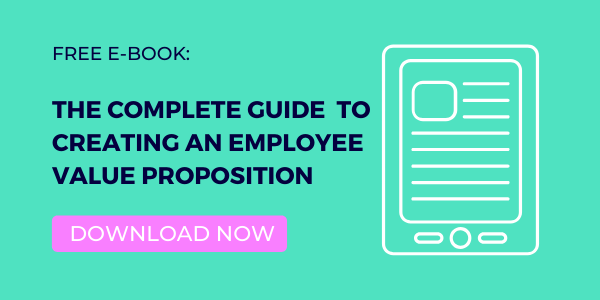This is the second installment of our series on calculating the ROI of employer branding. If you haven’t had a chance to read the first post, we recommend you take a few minutes to check it out before diving in.
In the first installment of this series, we walked you through the objective setting and information gathering necessary to calculate the ROI of your employer branding efforts. Now we’ll dive into how you can apply the information you’ve collected. In this piece, we’ll demonstrate a methodology for calculating the ROI of your employer branding efforts as it relates to the time-to-hire metric.
Full disclosure: this will require some math, which makes many of us queasy. But there’s no need to panic, as the numbers you’ll be crunching are simple enough for any smartphone calculator.
FREE E-BOOK: THE COMPLETE GUIDE TO CREATING AN EMPLOYEE VALUE PROPOSITION. DOWNLOAD HERE.
HOW TO CALCULATE AVERAGE TIME-TO-HIRE

Let’s begin with an overview of the time-to-hire metric and a simple formula for measuring performance. Time-to-hire is relatively straightforward: it’s simply the average amount of time it takes an organization to fill its vacant positions. To determine an overall average, divide the total number of days your jobs have been open by the total number of open jobs for a given period of time (month, quarter, etc.):
Average time-to-hire = Total number of days your jobs have been open / Total number of open jobs
Generally speaking, the time-to-hire measurement period begins when a req is opened and ends when an offer is accepted. More important that your company’s definition of the term, however, is applying it consistently to ensure you’re gathering clean and actionable data.
It’s important to note that time-to-fill will vary by role. Highly-skilled tech roles, for example, will likely take longer to fill than entry-level positions. It’s worth taking some time to learn more about time-to-hire before finalizing your organizational definition.

HOW TO CALCULATE THE COST OF AN UNFILLED POSITION

Now that we know how to calculate the time-to-hire metric, we have to determine a method that allows us to assign it financial value. We’ll utilize a basic cost-of-vacancy calculation to do this. Cost-of-vacancy determines the amount of revenue your organization is unable to generate on a daily basis while a certain position is left vacant. There are many ways to calculate cost-of-vacancy, and we’ll utilize ERE’s basic average revenue per lost employee model:
(Company revenue / number of employees) / 220 (working days in a year)
With this formula, you can calculate how much revenue each employee accounts for, and how much you could be missing out on due to each vacant position.
HOW TO CALCULATE THE ROI OF EMPLOYER BRANDING

Let’s set the stage with a scenario that will provide the numbers we need to put our ROI formula to the test.
- Company X is a software consultancy with 30 full-time employees. It generated $10 million in revenue last year.
- Company X recently invested a total of $15,000 in a new careers page.
- As a result, average time-to-hire has decreased from 35 days to 31 days.
- Recently, five employees left the company and their positions were backfilled.
First, we’ll calculate Company X’s cost of vacancy. If you get lost, reference the formula from the previous section.
Cost of vacancy: (10,000,000 / 30) / 220 = $1,515.15/day
The organization is saving $6,060.60 per hire after reducing its average time-to-hire by four days ($1,515.15 x 4). If we multiply that by the five hires Company X made to backfill vacant positions, we get a total savings of $30,303. Now we have everything we need to calculate ROI. Remember that in the first post in this series we defined ROI as:
ROI = [(Financial value – Project cost) / Project cost] x 100
As such, our formula is: [(30,303 - 15,000) / 15,000] x 100 = 102.02
Company X realized a return on investment of slightly more than 100% by investing in its careers page and reducing time-to-hire. We used round numbers for simplicity’s sake, but the process works just the same with real-world figures.
TAKEAWAYS
Ok, that was a lot of math, but the payoff is pretty clear. We’ve said this before — and we’ll say it again because it bears repeating — but there is no one-size-fits-all approach when it comes to proving the ROI of your employer branding efforts. Our hope is this series will encourage you to take a more granular approach in determining what’s working for your organization and identifying opportunities for continued improvement.
We encourage you to read the articles we referenced throughout this piece to identify and dial in the method that will work best for your organization and try it for yourself. And make sure to check back soon as we continue the series with another common recruiting metric.
Further Reading: Calculating the ROI of Employer Branding: Employee Retention



